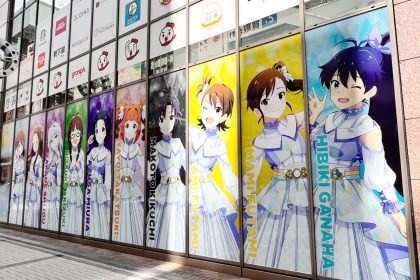Anime and manga have become significant cultural exports from Japan, captivating audiences worldwide with their unique storytelling and distinct visual styles. Anime refers to animated productions originating from Japan, while manga denotes Japanese comic books and graphic novels. In recent years, these art forms have gained immense popularity and have served as powerful mediums for intercultural exchange. This article explores the role of anime and manga in fostering connections between different cultures and how they have influenced global entertainment.
Cultural Representation in Anime and Manga
Exploring Cultural Diversity and Identity
One of the remarkable aspects of anime and manga is their ability to showcase diverse cultures. While many anime and manga narratives are deeply rooted in Japanese culture, they also explore other cultures, both real and fictional. Works such as “Spirited Away” and “Your Name” beautifully depict Japanese landscapes, traditions, and values, giving audiences a glimpse into the rich tapestry of Japanese life. Moreover, anime and manga often incorporate elements from various cultures, blending them seamlessly to create captivating narratives. This cross-cultural fusion can be seen in series like “Samurai Champloo,” which combines Edo-period Japan with hip-hop culture, resulting in a unique and engaging story.
Language and Communication
Unlocking Linguistic Horizons Through Anime and Manga
Anime and manga have also proven to be valuable tools for language acquisition and intercultural communication. Many enthusiasts of these art forms have found themselves drawn. To learning the Japanese language as a means to better appreciate the original content. Through exposure to anime and manga, learners can immerse themselves in the language, picking up vocabulary, grammar, and idiomatic expressions. However, localization and translation challenges can arise when anime and manga are adapted for international audiences. Striking a balance between staying true to the source material and making it accessible to non-Japanese speakers is a complex task that requires skilled translators and cultural mediators.
Further Readings: The Influence of Western Literature on Anime
Bridging Cultural Differences
Intercultural Exchange can Promoting Understanding and Empathy
Anime and manga have the power to bridge cultural differences by highlighting shared themes and universal values. Stories of friendship, love, and personal growth resonate with audiences across the globe, transcending cultural boundaries. By presenting diverse characters and narratives, anime and manga challenge stereotypes and foster understanding. They provide a platform for underrepresented voices and offer a glimpse into different perspectives. Through these narratives, viewers and readers can develop empathy and appreciation for cultures beyond their own, ultimately promoting a more interconnected world.
Intercultural Exchange and the Influence on Global Entertainment
From Niche to Mainstream: The Impact of Anime and Manga
Anime and manga have had a profound influence on Western media and popular culture. The success of anime films like “Akira” and “Studio Ghibli” productions has paved the way for more diverse and experimental storytelling in Western animation. Likewise, manga has gained a dedicated following outside of Japan, with numerous translated works captivating readers worldwide. Fan communities and conventions have sprung up. Providing spaces for enthusiasts to celebrate their favorite series and connect with like-minded individuals. Additionally, collaborations between Japanese and Western creators have resulted in cross-cultural adaptations, further expanding the reach and influence of anime and manga.
Anime and Manga as Cultural Ambassadors
The Soft Power of Japanese Pop Culture
Anime and manga serve as cultural ambassadors, promoting Japanese culture and attracting tourists from around the world. The popularity of anime and manga hasled to a surge in “anime tourism,”. With fans visiting real-life locations featured in their favorite series. This influx of tourists has had a significant economic impact. Boosting local businesses and creating new opportunities for the tourism industry. Furthermore, the Japanese government has recognized the soft power of anime and manga. Actively promoting them as part of its cultural diplomacy efforts. Through initiatives like Cool Japan, Japan aims to showcase its unique culture and attract international audiences, solidifying its position as a global leader in the realm of entertainment.
Potential Challenges and Criticisms of Intercultural Exchange in Anime
Navigating the Complexities of Representation
While anime and manga have undeniably played a vital role in intercultural exchange, they are not without challenges and criticisms. One of the main concerns is cultural appropriation and misrepresentation. As anime and manga gain popularity globally, there is a risk of cultures being reduced to stereotypes or elements being taken out of context. It is crucial for creators and consumers to approach these art forms with cultural sensitivity and respect. Additionally, gender and diversity issues have been raised, with some critics arguing that anime and manga often perpetuate gender norms and lack representation of marginalized groups. Balancing the preservation of cultural authenticity with the demands of a global audience is a complex task that requires ongoing dialogue and reflection.
Conclusion on Intercultural Exchange in Anime
Anime and manga have transcended borders, connecting people from diverse cultures through shared stories and captivating visuals. They serve as bridges that foster intercultural exchange, promoting understanding, empathy, and appreciation for different cultures. Through their global reach, anime and manga have become powerful tools for cultural diplomacy. Showcasing the richness of Japanese culture and attracting audiences worldwide. However, as these art forms continue to evolve and gain prominence. It is essential to address challenges such as cultural appropriation and representation to ensure a more inclusive and respectful exchange of ideas and experiences. Anime and manga have the potential to shape a more interconnected and culturally diverse world, where boundaries are blurred, and understanding thrives.












